
Sir Ferdinando Gorges was a naval and military commander and governor of the important port of Plymouth in England. He was involved in Essex's Rebellion against the Queen, but escaped punishment by testifying against the main conspirators. His early involvement in English trade with and settlement of North America as well as his efforts in founding the Province of Maine in 1622 earned him the title of the "Father of English Colonization in North America," even though Gorges himself never set foot in the New World.

Braunton is a large village, civil parish, ecclesiastical parish and former manor in Devon. The village is situated 5 miles (8 km) west of Barnstaple. It is one of the largest villages in Devon with a population at the 2021 census of 10,217 people. There are two electoral wards. Their joint population at the above census was 8,218. Within the parish is the fertile, low-lying Braunton Great Field, which adjoins the undulating Braunton Burrows, the Core Area in North Devon Biosphere Reserve, the largest psammosere in England. It confronts the Atlantic Ocean at the west of the parish at the large beach of Saunton Sands, one of the South West's international-standard surfing beaches.

North Cadbury is a village and civil parish 5 miles (8 km) west of Wincanton, by the River Cam, in the Unitary Authority of Somerset, England. It shares its parish council with nearby Yarlington and its civil parish includes the village of Galhampton, which got its name from the settlement of the rent-paying peasants, and the hamlet of Woolston.

Sir Thomas Gorges of Longford Castle in Wiltshire, was a courtier and Groom of the Chamber to Queen Elizabeth I. Via his great-grandmother Lady Anne Howard, a daughter of John Howard, 1st Duke of Norfolk, he was a second cousin of both Queens Anne Boleyn and Catherine Howard, the second and fifth wives of King Henry VIII. In 1586 he was elected as a Member of Parliament for Downton in Wiltshire.

The Gorges family was a gentry family established in the southwest of England.

Sir Maurice Russell, JP of Kingston Russell, Dorset and Dyrham, Glos. was an English gentleman and knight. He was a prominent member of the Gloucestershire gentry. He was the third but eldest surviving son and heir of Sir Ralph Russell (1319–1375) and his wife Alice. He was knighted between June and December 1385 and served twice as Knight of the Shire for Gloucestershire in 1402 and 1404. He held the post of Sheriff of Gloucestershire four times, and was Coroner and Justice of the Peace, Tax Collector and Commissioner of Enquiry. His land holdings were extensive in Gloucestershire, Somerset, Dorset, Berkshire and Buckinghamshire. He was descended from an ancient line which can be traced back to 1210, which ended on the death of his son Thomas, from his second marriage, as a young man without male issue. Most of his estates, despite having been entailed, passed at his death into the families of his two daughters from his first marriage.

Sir William Russell (1257–1311) was an English nobleman, knight, and holder of a moiety of the feudal barony of North Cadbury, Somerset, but spent most of his life engaged in the administration and defence of the Isle of Wight, where he obtained by marriage the manor of Yaverland. He served as constable of Carisbrooke Castle, and sat in parliament on two occasions, firstly as burgess for Great Bedwyn, Wiltshire, and then for the County of Southampton. As a baron his military service was called on several times by King Edward I Hammer of the Scots.
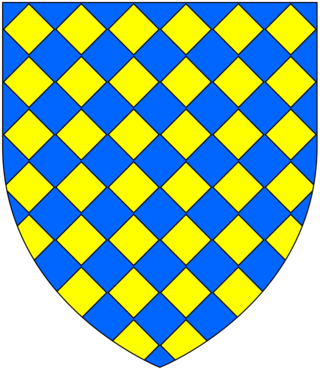
Warbelton v. Gorges was one of the earliest heraldic law cases brought concerning English armory, in 1347. It concerned the coat of arms blazoned Lozengy Or and azure, that is a field of yellow and blue lozenges. The arms were borne by the unrelated families of Warbelton, from Hampshire, and Gorges, from Somerset, apparently without knowledge of each other or their common usage, until John de Warbelton and Theobald de Gorges served together in the English army at the Siege of Calais in 1346/7. A gentleman's armorial bearings represented his very identity and were of enormous importance to him, both as a matter of family pride and for practical purposes of personal recognition in battle and in legal seals. Warbelton made a formal complaint to the officer appointed by the king to resolve such matters, namely Henry of Grosmont, Earl of Lancaster, seneschal of England, who was commanding the English forces. A 6-man court of honour was convened and the pair were cross-examined, with evidence being sought from knights of their own localities also serving at the siege.

Maurice Denys, Esquire, of Siston, Gloucestershire, was twice Sheriff of Gloucestershire in 1460 and 1461. The Denys family were stated by Sir Robert Atkyns, the 18th-century historian of Gloucestershire, to have provided more sheriffs for that county than any other family.

Sir William Denys of Dyrham, Gloucestershire, was a courtier of King Henry VIII and High Sheriff of Gloucestershire in 1518 and 1526. The surname is sometimes transcribed as Dennis.

The Denys monumental brass in Olveston Church, Gloucestershire, dates from 1505, and is one of only about 80 surviving monumental brasses in Gloucestershire. It was erected following the death of Sir Walter Denys in 1505, and shows the latter together with his father Maurice Denys, both Sheriffs of Gloucestershire. The Denys family were at various times lords of the manors of Alveston, Earthcott Green, Siston and Dyrham in Gloucestershire.

Sir John Russell of Kingston Russell in Dorset, England, was a household knight of King John (1199–1216), and of the young King Henry III (1216–1272), to whom he also acted as steward. He served in this capacity as custodian of the royal castles of Corfe and Sherborne (1224) in Dorset and of the castles of Peveril and Bolsover in Derbyshire. He served as Sheriff of Somerset in 1223-1224. He was granted the royal manor of Kingston Russell in Dorset under a feudal land tenure of grand serjeanty. Between 1212 and about 1215 he acquired a moiety of the feudal barony of Newmarch, the caput of which was at North Cadbury, Somerset, in respect of which he received a summons for the military service of one knight in 1218.
The Manor of Dyrham was a former manorial estate in the parish of Dyrham in South Gloucestershire, England.

Sir Thomas Grenville II, K.B.,, lord of the manors of Stowe in Kilkhampton, Cornwall and Bideford, Devon, Sheriff of Cornwall in 1481 and 1486. During the Wars of the Roses, he was a Lancastrian supporter who had taken part in the conspiracy against Richard III, organised by the Duke of Buckingham. On the accession of King Henry VII (1485–1509) to the throne, Sir Thomas was appointed one of the Esquires of the Body to Henry VII. On 14 November 1501 upon the marriage of Prince Arthur to Katherine of Aragon, he was created a Knight of the Bath. He served on the Commission of the Peace for Devon from 1510 to his death in circa 1513.
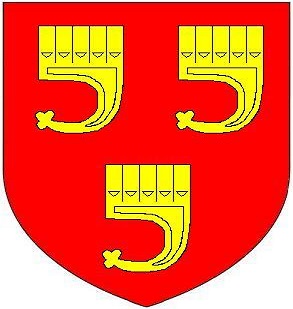
The manor of Bideford in North Devon was held by the Grenville family between the 12th and 18th centuries. The full descent is as follows:
Budockshed is a historic estate in the parish of St Budeaux, near Plymouth in Devon, England.
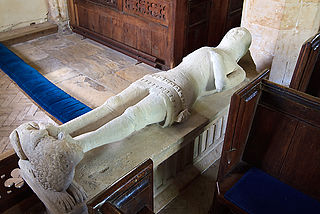
Sir Edmund Cheyne (d.1374/83) of Poyntington in Somerset, was a Member of Parliament and served as Warden of the Channel Islands 1358-1367.
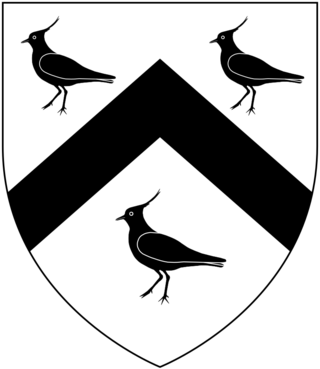
John Twynyho of Cirencester, Bristol and Lechlade, all in Gloucestershire, was a lawyer and wealthy wool merchant who served as Recorder of Bristol, as a Member of Parliament for Bristol in Gloucestershire in 1472-5 and in 1484 and for the prestigious county seat Gloucestershire in 1476. In 1478 he was Attorney General to Lord Edward (the future King Edward V, eldest son and heir of King Edward IV.

Brooke in the parish of Ilchester in Somerset, England, was an historic estate, the earliest known seat of the prominent Brooke family, Barons Cobham.
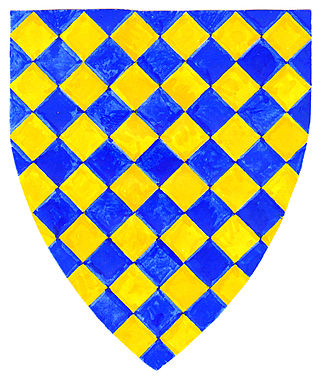
Baron Gorges was a title created in the Peerage of England for the soldier Sir Ralph Gorges, of Wraxall in Somerset, who was summoned to Parliament as a baron in 1309. On the death of his son without children in 1344, any hereditary title expired.



















